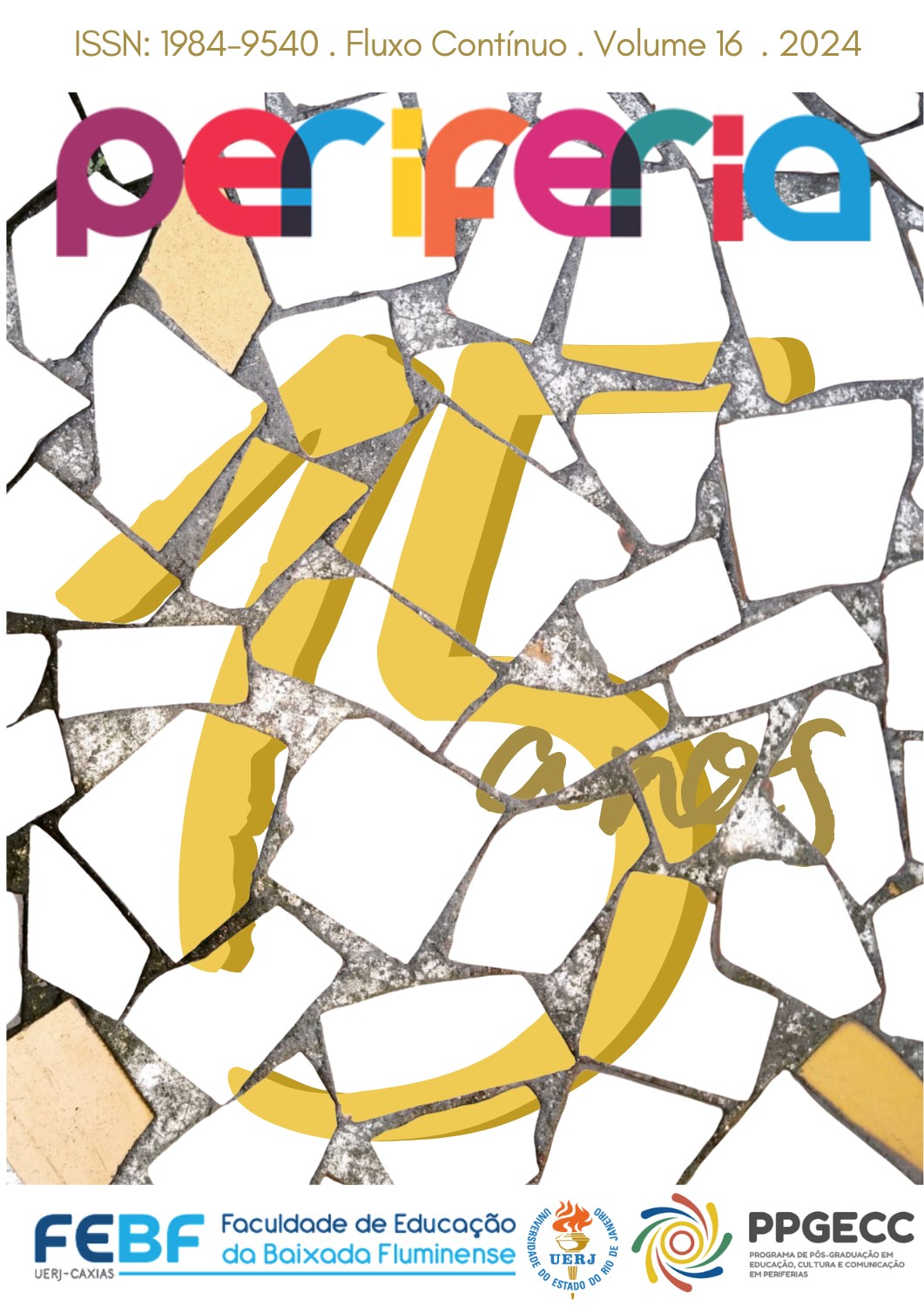UMA GERAÇÃO DE POLÍTICAS INCLUSIVAS NA EDUCAÇÃO SUPERIOR BRASILEIRA:
do acesso e permanência ao acolhimento
DOI:
https://doi.org/10.12957/periferia.2024.80020Palavras-chave:
Universidade Pública, Ações Afirmativas, Cotas Raciais, Democratização, AcolhimentoResumo
Nos últimos vinte anos, a universidade pública brasileira tornou-se mais negra, popular e feminina do que jamais foi em toda sua história. Este artigo revê essa geração de políticas inclusivas de uma perspectiva autobiográfica, priorizando o ponto de vista de um professor que vivenciou essas mudanças na vida universitária. Em 2004, o marco inicial foi a adoção do Exame Nacional do Ensino Médio (ENEM) que mudou a forma de acesso e passou a demandar políticas de permanência voltadas para o novo perfil dos ingressantes, com investimento na ampliação e interiorização de campi, bolsas de estudos, alimentação e transporte. A partir de 2012, as políticas de ação afirmativa, especialmente as cotas raciais, e o crescimento de demandas de justiça de gênero ampliaram o sentido da inclusão para além de suportes materiais, trazendo para o centro do debate as políticas de acolhimento, voltadas para a promoção de um ambiente livre de discriminações, com valorização da diversidade e atenção às questões subjetivas, mas que afetam objetivamente a vida do estudante universitário, como o sofrimento e a depressão. A conclusão se debruça sobre os desafios atuais das políticas inclusivas para pensar os avanços e limites de uma universidade em transformação.
Referências
BRASIL. Plano Nacional de Educação (PNE). Lei Federal n.º 10.172, de 9/01/2001. Brasília: MEC, 2001c.
BRASIL. Instituto Nacional de Estudos e Pesquisas Educacionais Anísio Teixeira (Inep). Censo Escolar da Educação Básica 2022: Resumo Técnico. Brasília, 2023.
BRASIL. Instituto Brasileiro de Geografia e Estatística - IBGE. 2022a. Disponível em https://www.ibge.gov.br/explica/desemprego.php. Acesso em 13 de maio de 2023.
BRASIL. Instituto Nacional de Estudos e Pesquisas Educacionais Anísio Teixeira (Inep). Censo da Educação Superior 2021: notas estatísticas. Brasília, DF: Inep, 2022b
CHALHOUB, Sidney “A História como hiperficção”. In: Historiadores pela Democracia. O Golpe de 2016: a Força do Passado. Mattos, Hebe; Bessone, Tânia e Mamigonian, Beatriz G (Orgs.). São Paulo: Alameda, 2016.
FRASER, Nancy. O velho está morrendo e o novo não pode nascer. São Paulo: Autonomia Literária, 2021.
GRAMSCI, Antonio. Intelectuais e a Organização da Cultura. São Paulo: Civilização Brasileira, 1989.
HASENBALG, Carlos. SILVA, Nelson. LIMA, Márcia. (1999), Cor e Estratificação Social. Rio de Janeiro: 1999
HONNETH, Axel. Luta por Reconhecimento. A Nova Gramática Moral dos Conflitos Sociais. São Paulo: Editora 34, 2003.
INEP – Censo da Educação Superior. Brasília, 2022
RIBEIRO, Carlos Costa. (2006), “Classe, Raça e Mobilidade Social no Brasil”. DADOS – Revista de Ciências Sociais.
ROSSATO, R. Universidade: nove séculos de história. Passo Fundo: EdiUPF, 1998.
SANTOS, Wanderley Guilherme dos. A Democracia Impedida. O Brasil no Século XXI. Rio de Janeiro: FGV Editora, 2017.
SILVA, Jailson de Souza; BARBOSA, Jorge Luíz; SOUSA, Ana Inês. Caminhadas de Universitários de Origem Popular (UNIRIO). Rio de Janeiro: PROEX/UFRJ; Brasília: SECAD/MEC, 2009.
Downloads
Publicado
Como Citar
Edição
Seção
Licença
Autores que publicam nesta revista concordam com os seguintes termos:- Autores mantém os direitos autorais e concedem à revista o direito de primeira publicação, com o trabalho simultaneamente licenciado sob a Creative Commons Attribution License que permitindo o compartilhamento do trabalho com reconhecimento da autoria do trabalho e publicação inicial nesta revista.
- Autores têm autorização para assumir contratos adicionais separadamente, para distribuição não-exclusiva da versão do trabalho publicada nesta revista (ex.: publicar em repositório institucional ou como capítulo de livro), com reconhecimento de autoria e publicação inicial nesta revista.
- Autores têm permissão e são estimulados a publicar e distribuir seu trabalho online (ex.: em repositórios institucionais ou na sua página pessoal) a qualquer ponto antes ou durante o processo editorial, já que isso pode gerar alterações produtivas, bem como aumentar o impacto e a citação do trabalho publicado (Veja O Efeito do Acesso Livre).







